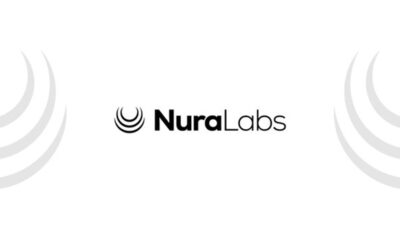Business
3 Benefits of Asset Tracking for Businesses

Running a business requires you to track every movement within the company. From the processes themselves to the assets, they must be looked after as they are considered to be the backbones of businesses. Particularly with tracking your assets, it is important specifically for your company’s growth and profitability. Asset tracking is actually a necessary element for companies, a way of recording critical data and information on an asset’s state and location inside the company. It is done by detecting barcodes or RFID tags with scanning devices, offering accurate data in real time. Though this tracking process is just one half of the puzzle, it is the most crucial one — the process of knowing where your assets are and where they have been.
Companies employ this type of system to keep track of their physical assets. This usually entails the use of software to maintain information about each asset such as its location, maintenance history, ownership, and contracts. When a company uses a centralized system to track its assets, it saves time and money by eliminating the need for manual tracking. Asset tracking systems actually have numerous advantages that can significantly improve business processes.
One is that asset tracking can be useful in a variety of situations. For instance, when one of your employees places a valuable asset in an inconvenient area, it makes it difficult to locate it later. Because things like these can happen, tracking your assets is a useful organizational tool for better controlling a company’s operations.
And as mentioned earlier, assets are one of the backbones of a business. Thus, the ability to track asset-specific metrics can be important to productivity, efficiency, and cost control. Whether your company is trying to deploy asset tracking technology, looking to improve equipment maintenance, or just wants to make sure they know exactly where all of the parts are or want to manage potential equipment expenses, there are a number of asset tracking solutions that can help you as an entrepreneur and your management team. By using a computerized maintenance management software with GPS asset tracking systems, it is deemed to be an effective measure that offers a clear advantage over barcodes because they offer more information than just location.
You may quickly monitor and track assets using a laptop or mobile device, all thanks to the simple and quick installation of tiny, mountable asset tracking devices.
Easily Locate Assets
Of course, one of the common benefits of asset tracking would be being able to locate the assets of your business easily. For this reason, the maintenance of the assets by tracking them increases the efficiency of the procedure as well. Asset tracking systems being incorporated into every asset you have in the company enables you to put barcode identification, providing an online presence, which makes it easier for you to locate them. They are coordinated with GPS devices, which will let you identify the last location of the asset. Therefore, lost or misplaced ones can be found quickly.
For instance, assume you own an airport with thousands of carts available for travelers to rent to transport their bags from their automobile to the baggage claim. Despite the fact that the carts are always in use, people leave them in the garage, while airport staff hoard them to help carry other assets from terminal to terminal. Every cart that goes missing costs the rental company money. You can locate those carts and put them back into use utilizing an asset tracking software or system. This can be an effective solution that can help you find them both inside and outside the terminal.
Reduce Unnecessary Costs
Asset tracking also eliminates the need for staff to manually track down assets, resulting in fewer administrative costs for your company. Without a tracking system, companies rely on their administrative staff to handle asset management. However, this approach often results in more human errors, and thus, not only leads to a loss of valuable assets, but also costs significantly more. And no company wants that.
Repair and maintenance costs, in addition to administrative costs, can be minimized as well. It is critical to track the life cycle of your assets since knowing numerous details about a thing, such as when it was purchased, how frequently it is used, and how well it is maintained, allows you to plan effectively for its replacement. Having a wider view of the item can assist you in making an accurate assessment of future asset purchases.
An asset tracking system also handles the work for you by storing all asset information and data. It assists you in scheduling maintenance jobs and setting up alarms, while aiding in the expansion of your firm by identifying ineffective goods. If they are under-maintenance, on the other hand, it might result in decreased efficiency. As a result, maintenance should be performed on a regular basis, and the software can help you keep track of it. Thus, as a result, with asset tracking software’s help, you can keep track of your assets and readily see records that will help you identify which assets require repair, avoid unexpected maintenance, and save those expenses.
Improves Efficiency and Accuracy
Of course, automation leads to an improvement in efficiency and accuracy. By being able to track the maintenance performed on assets, associated costs and downtime, location, and other business aspects, your team will be able to make data-driven decisions relative to your most valued assets. This, thus, brings to the conclusion that asset tracking brings predictability and insights to companies, helping you anticipate the asset needs of your business as well. In addition to the increase in efficiency and organization, asset tracking can be able to bring improvements to accuracy and productivity as well. You will be able to have a clear picture of where the assets are and how they are utilized. No more guesswork or assumptions; you will have access to all the information you need to make the greatest business decisions.
You can make confident business decisions when you can track every element of your assets, including location, condition, and use cases. Businesses can also use essential data from asset tracking reports to make important strategic decisions. Of course, this advantage is dependent on everyone in your company following asset monitoring best practices.
Key Takeaway
Overall, the general objective of asset tracking is mainly to easily locate the assets by enabling real-time monitoring of assets, save business time and cash, as well as bring improvements relative to the business processes’ efficiency and accuracy. It can even remind you when an asset needs maintenance as well. With all these benefits, your business can certainly grow efficiently. And by being able to implement a flexible asset tracking system, you can be able to streamline business operations, ensuring that your assets retain their value, and others; leading your business to thrive in the industry they are in.
-

 Business7 days ago
Business7 days agoUS Stock Market Soars in May Amidst Tariff Tensions and Inflation Worries
-

 Foreign Policy5 days ago
Foreign Policy5 days agoInside Schedule F: Will Trump’s Federal Workforce Shake-Up Undermine Democracy?
-

 Press Release4 days ago
Press Release4 days agoIn2space Launches Campaign to Make Space Travel Accessible for All
-

 Press Release46 minutes ago
Press Release46 minutes agoNura Labs Files Revolutionary Patent: AI-Powered Wallet Solves the $180 Billion Crypto Staking Complexity Crisis
































